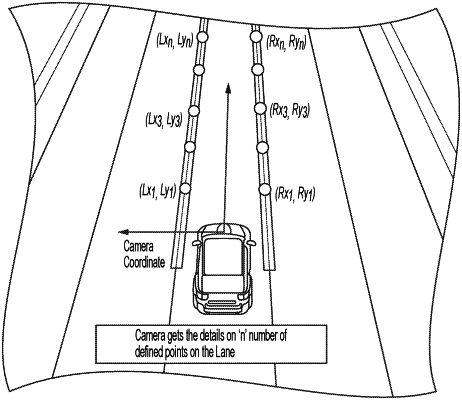| CPC B60W 30/12 (2013.01) [B60W 2420/403 (2013.01); B60W 2510/0638 (2013.01); B60W 2552/30 (2020.02); B60W 2552/53 (2020.02); B60W 2554/4045 (2020.02)] | 18 Claims |

|
1. A method for testing a vehicular lane centering algorithm, the method comprising:
providing a simulation environment, wherein the simulation environment simulates a vehicle;
providing the vehicular lane centering algorithm to the simulation environment;
generating a base scenario for the vehicular lane centering algorithm for use by the simulated vehicle;
receiving, from the simulation environment, traffic lane information, wherein the traffic lane information comprises (i) a first plurality of points from a left lane marker of a simulated traffic lane and (ii) a second plurality of points from a right lane marker of the simulated traffic lane;
fitting a first polynomial to the first plurality of points;
fitting a second polynomial to the second plurality of points;
measuring performance of the vehicular lane centering algorithm during the base scenario using the first polynomial and the second polynomial;
generating a plurality of modified scenarios derived from the base scenario, wherein each modified scenario of the plurality of modified scenarios adjusts at least one parameter of the base scenario, and wherein the at least one parameter comprises at least one selected from the group consisting of (i) vehicle mass and (ii) vehicle wheelbase; and
measuring performance of the vehicular lane centering algorithm during the plurality of modified scenarios using the first polynomial and the second polynomial.
|